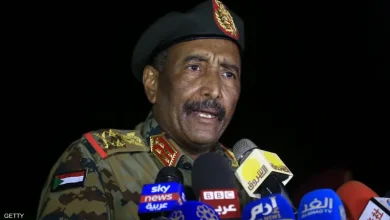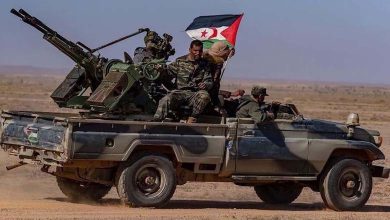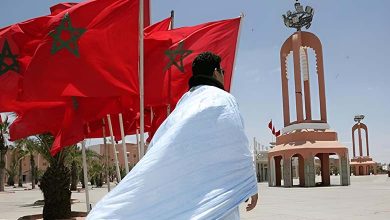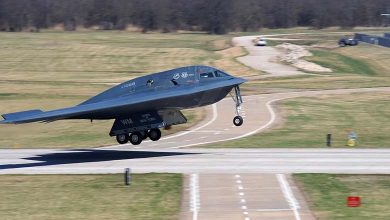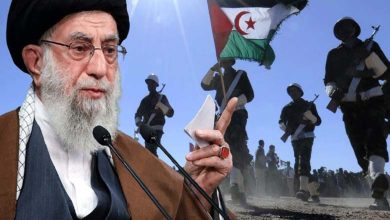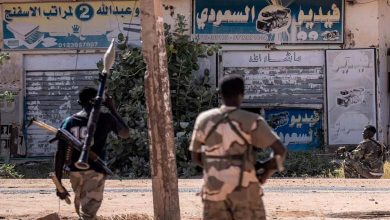Iran and the Muslim Brotherhood: Historical relations
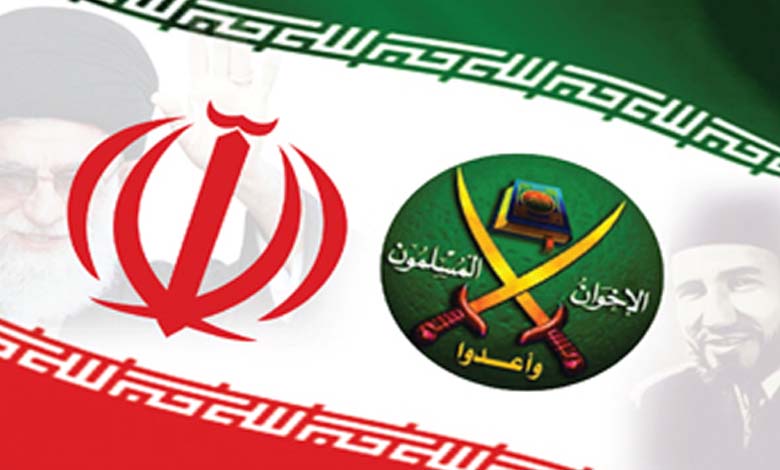
The relationship between the Muslim Brotherhood and Iran after the Islamic Revolution of 1979 is one of the most intricate subjects for researchers and scholars due to its secretive and mysterious nature. However, despite this, a set of ideological affinities and historical relations reveals the close connection between them, as well as the mutual influence between the two parties.
A number of ideological affinities and historical relations embody the structure and identity of convergence between the Muslim Brotherhood and Iran since the inception of the “Islamic Revolution” in 1979. Despite doctrinal differences, ideological concepts, ideas, and references from both Sunni and Shiite political Islam intersect, having been transmitted and influencing both sides of the relationship.
Political Islam in Iran has been influenced by figures such as Hassan al-Banna, Sayyid Qutb, and Maududi. Similarly, the Iranian revolution impacted the orientations and trajectories of Sunni political Islamist groups in the region. Both parties share similar political positions and visions regarding their relationship with the West and their approach to the Israeli-Palestinian conflict. They also converge in their religious, discursive, and positional dimensions towards the modern state.
In this paper, three main affinities are noted, which form the framework of work and general activity for both Iran and the Muslim Brotherhood in particular. The promotion of Islamic unity is foremost, alongside an expansionist vision that transcends geographical borders, and the “establishment and restoration of the Islamic Caliphate” as the ultimate goal and purpose of political action. Based on these affinities, both parties find motivation and encouragement to foster closer relations, cooperate, and even influence each other’s thoughts and behaviors.
Firstly: The Call for Islamic Unity
For decades, Iran has been working to strengthen its relations with all countries and various Islamic sects worldwide to consolidate its hegemony and influence in service of its political project, examples of which have been seen in countries like Iraq, Lebanon, and Syria. It has sought to employ all possible means to achieve this long-term strategic goal, including organizing the “Conference for Islamic Unity” initiated by the World Council for Proximity of Islamic Schools of Thought in Iran.
This conference is held annually during the days of the Prophet’s birth or what is called the “Islamic Unity Week,” between the 12th and 17th of Rabi al-Awwal, and was founded in 1981, upon the proposal of Ayatollah Montazeri and with the approval of the Supreme Leader of the Islamic Revolution, Ayatollah Khomeini.
Thus, Iranian calls for Islamic unity intersect with similar calls from political Islamic currents, representing the major determinants of their political and proselytizing actions together. Consequently, when examining the political discourse of either side, it is found not to be devoid of calls for the unification of the Islamic nation against its “virtual enemies” and for the dissemination of its ideology globally.
In this context, it is worth noting the opinions of Islamic intellectual figures who support the idea of Islamic unity, just as Iran does, and as supported by political Islamic currents. Among them is the Syrian Islamic thinker Mahmoud Shaker al-Harastani, who states in his book “Islamic History”: “The nation is not limited to a specific geographical area, but the field of action of the Muslim nation is the whole world. Wherever it succeeds in establishing God’s rule, that is its primary seat and point of departure. Then, it expands its circle through preaching, spreading the idea, and jihad until it encompasses the entire earth. As long as the idea does not cover the whole earth and the whole world is not governed by God’s law, the mission of the nation remains, and it has a great duty, which is jihad in the path of God until it can apply God’s methodology on the earth as a whole.”
Secondly: The Islamic Caliphate
Despite the historical divergence regarding the nature of the term “Islamic caliphate” or “imamate” between the two sides, Sunni and Shiite, the political and ideological motive brings the two groups closer in this idea, even if the tools used to achieve it differ. Talk about this idea and the necessity of its realization has been reinforced after the fall of the Ottoman caliphate in 1924.
The Muslim Brotherhood was among the leading proponents of this idea, as evidenced by the writings of the founder of the Muslim Brotherhood, Hassan al-Banna, especially his letter at the fifth congress titled “The Muslim Brotherhood and the Caliphate,” in which he said: “Perhaps it is necessary, in this research, to present the position of the Muslim Brotherhood regarding the caliphate and what is related to it, explaining that the Brothers believe that the caliphate is the symbol of Islamic unity and the connection between the nations of Islam, and that it is an Islamic element that Muslims must consider, care about, and that the caliph has many responsibilities in the religion of God.”
Following the path of the Muslim Brotherhood, many political Islamic movements emerged in all Islamic countries, especially in Iran in the 1950s, and were adopted and integrated by the Shiite cleric of the time, “Mujtaba Mirlohi,” known as Navvab Safavi, founder of the Iranian organization of the Islamic fundamentalist Fedayeen, which resembled the Muslim Brotherhood in approach and organization, confirming the early linkage and overlap between political Islamic currents in Egypt and Iran since the visit of Imam Khomeini to Egypt and his meeting with the founder of the Muslim Brotherhood, Hassan al-Banna, in 1939.
Over time, the term “Islamic caliphate” has transformed into “Islamic State,” uniting not only political Islamic currents and Iran but also violent jihadist groups such as Al-Qaeda and ISIS, which, among Sunnis, rely on the ideological and ideological principle of “sovereignty,” similar and resembling the principle of “wilayat al-faqih” among Shiites in the era of the Khomeini revolution, which did not exist before it. Based on this, they share common positions and perceptions of society and the common enemy, among others.
Thirdly: Expansionist Ambitions
Iran’s opponents consider that expansionism and the dissemination of “Islamic Revolution” ideas dominate its foreign policies, according to the principle of “exporting the revolution” established by Khomeini as one of its primary principles and issues. They perceive Iran as exploiting conflict zones and disagreements in the Middle East to solidify its allies’ positions and undermine the influence of its adversaries. They argue that its ultimate goal is to establish a “belt” loyal to it, transcending national borders, stretching from Iran to Lebanon, including Iraq and Syria—a goal reminiscent of ancient Persian imperial ambitions, albeit with a distinctive tint grounded in its revolutionary ideology and allegiance to the Supreme Leader. This scenario raises serious concerns among Iran’s neighbors, sometimes prompting them to act to prevent its realization.
Iran’s foreign policy revolves around serving its expansionist goals, notably within the “Islamic world” strategically and ideologically. Thus, Iran targets higher Islamic principles beyond sectarian differences when addressing Muslims at large. This approach has been followed since the Islamic Revolution of 1979 and is naturally part of its agenda.
Examining Islamic movements, it is evident that they initially resisted sectarian inclinations in their inception and operation. For instance, Hassan al-Banna, the founder of the Muslim Brotherhood, contributed to Sunni-Shia dialogue, which was reflected in their stances on numerous regional issues at the time, such as their support for what became known as the “Constitutional Revolution” in Yemen in 1948, producing a national charter transforming the state system from a secular regime to an Islamic model blending intellectual foundations from the Shafi’i and Zaidi schools.
Likewise, there was an affinity between the Muslim Brotherhood and the Al-Dawa Party led by Mohammad Baqir al-Sadr. Al-Sadr’s writings and speeches circulated among Islamists, and the ideas of both Sayyid Qutb and Maududi were significant for Al-Dawa’s followers.
However, the relationship between the Sunni and Shia political Islam factions was influenced by the rise of jihadist Salafi movements and their extreme positions toward others, reestablishing sectarian relations according to historical gain-and-loss logic. This was reflected in conflict zones and competitions for power and resources, particularly after the Iraq War in 2003 and then the Syrian crisis in 2011.
The “Islamic Revolution” and the Role of the Muslim Brotherhood within It
The Islamic Revolution in Iran had complex relations with the political Islam trend in the Arab world beyond the scope of the Muslim Brotherhood, as evidenced by its relationship with the Palestinian Islamic Jihad Movement, which described itself in its early stages as the “supporters of the Islamic Revolution in Palestine.” Fathi Shqaqi, former secretary-general of the movement, was significantly influenced by Khomeini’s revolution in Iran, viewing Khomeini as initiating an Islamic awakening in the region and globally.
It is apparent in this context that Iran also enjoyed close relations with other Islamic movements in Palestine outside of the Islamic Jihad Movement, particularly Hamas. Within this framework, Iran led what is termed the “resistance axis” in the region.
It is worth noting that the Muslim Brotherhood maintained connections with Iranian religious figures, who later became key players in the Islamic Revolution. According to media sources, Hassan al-Banna’s good relations with Iranian religious leaders sowed the seeds for the “revolutionaries” and the “Islamic Revolution” later on, such as Ayatollah Khomeini, who was invited to the Islamic conference for the liberation of Jerusalem in 1953 by Sayyid Qutb, and later received an invitation from the Muslim Brotherhood for Sayyid to visit Egypt. It is reported that he said during his meeting with Mustafa al-Sibai, a Brotherhood observer in Syria, “Whoever wants to be a true Ja’fari should join the ranks of the Muslim Brotherhood.” It is also noteworthy that Iran’s current Supreme Leader, Ali Khamenei, entered politics through the Muslim Brotherhood, and he, Khamenei, was an admirer of Sayyid Qutb, translating two of his books, “This Religion” and “Signposts on the Road.”
It is evident from this that the concepts of the Iranian Islamic movement and its revolution were influenced in one way or another by the thinking of the Muslim Brotherhood. Besides Sayyid Qutb, other activists also collaborated with the Muslim Brotherhood, playing a significant role in the Iranian Islamic movement’s rise to power. Among them was Ibrahim Yazdi, who was the representative of the revolution’s leader and the first Supreme Leader of the Islamic Republic, Ayatollah Ruhollah Khomeini, and became the foreign minister in the first government after the revolution in 1979.
The relationship between the Muslim Brotherhood and Iranian Islamists continued after the revolution’s success. The “Reform Party,” affiliated with the Muslim Brotherhood, was founded in Tehran, led at the time by Abdul Rahman Birani. In reality, the Islamic Revolution in Iran left its mark on political Islam groups, especially the Muslim Brotherhood. Dr. Manouchehr Mohammadi, a senior official in the Iranian Foreign Ministry, in his book “The Repercussions of the Islamic Revolution in the Islamic World,” emphasized that “the Islamic Revolution was able to have its impact on the Muslim Brotherhood movement to some extent, to the point that the general secretariat of the International Organization of the Muslim Brotherhood in Egypt contacted the officials of the Islamic Revolution in Iran immediately upon its victory, congratulating Iran on the revolution’s victory,” adding that “the Muslim Brotherhood published a book in 1979 titled The Islamic Alternative, considering Khomeini‘s method and the Islamic Republic as the Islamic solution path to liberate from subservient regimes.”
On the other hand, Iran utilized its relations with political Islam groups to improve its ties and bolster its influence in the Islamic world. Furthermore, both sides take a united stance against American presence in the region. Iran seeks a trans-border ally to resist this presence, in addition to the role of political Islam currents in mediating between Tehran and radical Islamist or Salafist groups, which view Iran as a hostile force in the Middle East.
For the Muslim Brotherhood, their relations with Iran represent an interest in presenting themselves as a group advocating for Islamic unity, to exert pressure on Arab countries, especially those taking an opposing stance to Iran’s expansionist policies. However, due to the developments of the so-called “Arab Spring,” the group was forced to limit its relations and cooperation with Iran, fearing the reaction of Western powers, especially the United States and Britain, which hold a negative view of Iran’s foreign policies. Nevertheless, once the group came to power in Egypt in 2011, it swiftly engaged in contacts with Iran.
The Radical Influence Sources of the Khomeini Revolution
Firstly: The Initial Success of Political Islam Movements in the Twentieth Century
The Islamic Revolution of Khomeini was the first success achieved by a political Islamic movement in establishing a state according to its own references and its conflictual and expansionist vision for the region and the world. Egypt, the Gulf states, and Pakistan were prime targets in Khomeini‘s rhetoric, as evidenced by an archived interview he gave to Mike Wallace of CBS following the success of the Islamic Revolution. In this interview, Khomeini described Egyptian President Anwar Sadat as follows: “Sadat claims to be a Muslim, and we are not, he is not a Muslim! He deals with the enemies of Islam! Sadat has put his hand in the hand of our enemies! (referring to the peace agreement with Israel) He knows very well what is happening in southern Lebanon and with the Palestinians! He knows the crimes of the Israelis! Yet he still considers himself a Muslim! He is undoubtedly an infidel!”
This was also evident in his second meeting with the late Egyptian journalist Mohamed Hassanein Heikal, where he called on Islamic peoples, especially the Egyptian people, to overthrow their rulers and change them, drawing inspiration from what happened in Iran. Khomeini said: “I despair of the governments, but for the peoples, it is different. The Egyptian people have their own rule and Anwar Sadat has his own rule. The same goes for all peoples in relation to all governments.”
This discourse had an impact on extremist Islamic groups in Egypt in particular, as noted by Ayman al-Zawahiri, the current leader of Al-Qaeda and emir of the Egyptian Jihad organization: “The activity of these young people shifted from taking over the university to public activities outside the university, notably mass demonstrations and conferences against peace with Israel and against Sadat’s reception of the Shah of Iran in Egypt.” The aforementioned fatwa by Khomeini preceded the fatwa by Egyptian Jihad ideologue Muhammad Abdel Salam Faraj in his book “The Neglected Duty,” which considered the assassination of Sadat as a duty for jihadists.
Secondly: The First State with an Islamic Character After the Fall of the Ottoman Caliphate in 1924
A state ruled by religious figures, where the religious leader holds authority, makes it a centralized regime speaking on behalf of all Muslims, engaging in a “sacred jihad” as seen by each differing group. It is the product of the convergence of Khomeini‘s vision and that of Sayyid Qutb, whereby this religion is borne by the vanguard fighters of the mujahideen, and Khomeini emphasizes this unilateral and violent view of Islam by saying: “Islam is the religion of the fighters.”
Thirdly: The Belief in Exporting the Revolution to the Islamic World
Khomeini‘s ambition was not only national, but he saw nationalism as an idol and a tyrant, as seen by Sayyid Qutb and all other extremists. He saw himself and his revolution as a universal and global message. Khomeini affirmed this on the first anniversary of the Islamic Revolution on February 11, 1980, saying: “We are working to export our revolution to various parts of the world, because it is an Islamic revolution.”
Khomeini always addressed his discourse to the Arab and Islamic peoples, calling on them to overthrow their rulers. After the success of the Iranian Revolution, Khomeini addressed the Egyptian people, saying: “The Egyptian people must know that if they rise up as the Iranian people did, they will thwart the conspiracies and you will triumph. The Egyptian people should not fear their government and should not pay attention to its laws, for just as our people broke the barrier of fear and disobeyed the curfew, they filled the streets and roads.”
Fourthly: International and Regional Contexts of Assistance: the Occupation of Afghanistan and the Start of the Peace Process
International contexts, especially the Soviet occupation of Afghanistan in 1979, and the subsequent Afghan jihad, as well as the start of the Egyptian-Israeli peace process in 1978, and the emotions stirred by these events within the nation, provided a golden opportunity for Khomeini‘s discourse and the slogans of the Iranian Islamic Revolution to find their strong force and deep impact in various countries of the Islamic world.
In conclusion, there is ample evidence linking the Iranian Islamic Revolution to radical ideas, the former expanding the influence and spaces of extremism in various aspects of life, and having the greatest impact on the behavior of extremist groups in particular. After the success of the Iranian Revolution, Egyptian Jihadist groups united into one organization under the leadership of Mohammed Abdel Salam Faraj, which later led to the assassination of Egyptian President Anwar Sadat in 1981.
Waves of radical influence and extremism erupted in various parts of the Arab and Islamic world, thanks to the success of the Khomeini Revolution and its discourse, and due to the admiration of broad sectors of society – from various orientations – for its populism and slogans monopolizing Islam and speaking in the name of the entire nation and its factions, not just the Imamate reference despite its origin and insistence on it.
Based on this, the Muslim Brotherhood and Iran met in calls to Islamize laws and societies, which had an impact on many Arab countries, especially facing the dangers of repeating the model of the Iranian Islamic Revolution, a model that the Muslim Brotherhood seeks to apply in its areas of activity, as became evident after what is known as the “Arab Spring,” although changes in societies between 1979 and 2011 prevented the achievement of the necessary response and momentum for the rise and continuity of Islamic groups.



